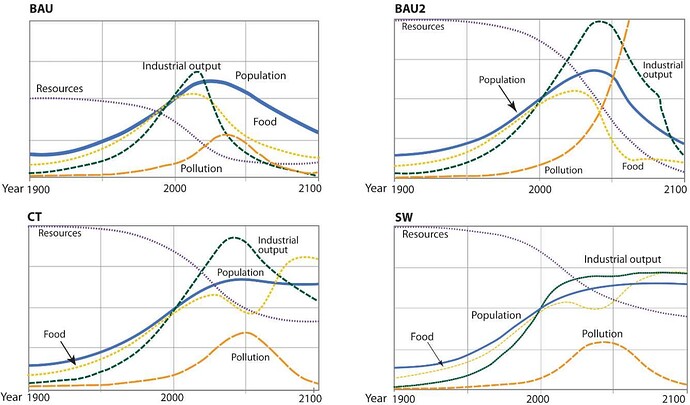I conducted a data update to Limits to Growth (LtG), best known from the 1972 bestseller that forecasted a scenario of global societal collapse occurring around the present time if humanity did not alter its priorities. Empirical data comparisons since then indicated that the world was still heading for collapse. My objectives were to examine whether this was still the case based on the most recent data, and whether there was opportunity left to change that trajectory. My research benefited from improved data availability, and included a scenario and two variables that had not been part of previous comparisons. I collected data from academia, (non-)government agencies, United Nations entities, and the World Bank. This was plotted along four LtG scenarios spanning a range of technological, resource, and societal assumptions. From these graphs and two quantitative accuracy measures, I found that the scenarios aligned closely with observed global data, which is a testament to the LtG work done decades ago. The two scenarios aligning most closely indicate a halt in growth over the next decade or so, which puts into question the usability of continuous growth as humanity’s goal in the 21 st century. Both scenarios also indicate subsequent declines, but only one —the scenario in which declines are caused by pollution, including greenhouse gas pollution —depicts a collapse pattern. The scenario with the smallest declines aligned least with empirical data, however, absolute differences were rarely big and sometimes insignificant. This suggests that it’s almost, but not yet, too late for society to change course.
